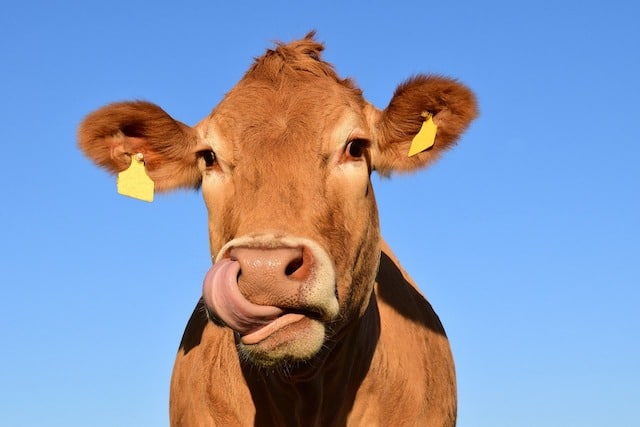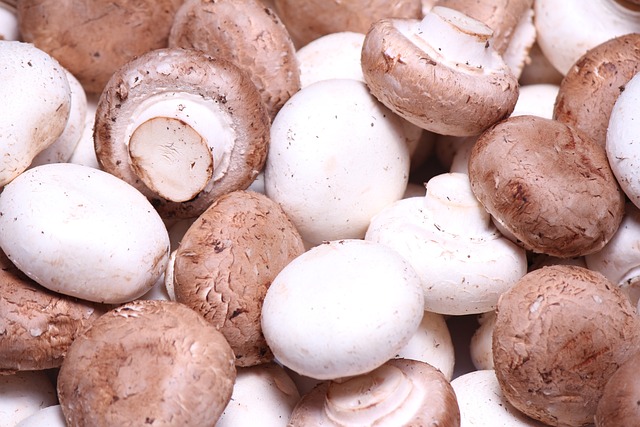10 Surprising Per Capita Figures That Reflect Global Trends
It’s deeply ingrained in human nature to strive for greatness. We yearn to be the best, to possess the most, and to achieve feats that set us apart from the crowd. Numbers, in all their glory, have become the yardstick by which we measure our success and standing. Whether it’s the number of followers on social media, the amount of wealth amassed, or the number of accolades earned, we seem to have an insatiable appetite for stacking up those digits.
This obsession with numbers isn’t inherently good or bad. In some cases, it can serve as a powerful motivator, pushing us to reach for new heights and achieve things we never thought possible. For instance, a company might aim to increase its sales figures year after year, driving innovation and growth in the process. An individual might strive to run a certain number of marathons, using the goal as a way to stay fit and disciplined.
However, there are times when this fixation on numbers can lead to negative consequences. We might become so focused on achieving a specific number that we lose sight of what truly matters. We might sacrifice our health, relationships, or personal values in the pursuit of a higher score. And in some cases, the pursuit of numbers can even lead to unethical behavior, as people try to cut corners or cheat their way to the top.
But when we zoom out and look at populations as a whole, the numbers take on a whole new level of significance. Per capita stats, in particular, can provide a fascinating window into the lives and characteristics of different groups of people. These statistics, which measure a particular quantity relative to the population size, can tell us a lot about a place – both its strengths and its weaknesses.
For example, consider the per capita income of a country. This figure, which represents the average income earned by each individual in a given population, can give us insights into the economic well-being of a nation. A high per capita income might suggest a prosperous economy with abundant job opportunities and a high standard of living. On the other hand, a low per capita income could indicate poverty, inequality, or a lack of economic development.
Similarly, per capita stats can be used to measure other aspects of a society, such as education levels, healthcare access, and environmental quality. The per capita number of college graduates in a region might indicate the strength of its educational institutions and the value placed on learning. The per capita rate of hospital admissions could provide clues about the effectiveness of the healthcare system and the prevalence of certain diseases. And the per capita amount of waste generated might reveal the environmental awareness and sustainability practices of a community.
However, it’s important to remember that per capita stats don’t tell the whole story. They provide a snapshot of a particular aspect of a population at a given point in time, but they don’t capture the full complexity and diversity of human experience. For example, a high per capita income might mask significant income inequality within a country, where a small elite controls a large portion of the wealth while the majority struggles to make ends meet. Similarly, a low per capita rate of hospital admissions might not necessarily mean that a population is healthy; it could simply reflect a lack of access to healthcare services.
10. Vatican City Has the Highest Per Capita Wine Consumption

While many people around the world enjoy a refreshing beer or a glass of port, when it comes to wine, it’s not the French who top the charts for consumption – it’s the residents of Vatican City. According to research from the California Wine Institute, the average resident of Vatican City consumed 74 liters of wine per year in 2012, a staggering amount compared to other countries. For context, Italy and France each average around half that amount.
In the United States, wine consumption per capita is a modest 3.18 gallons (just over 12 liters). This puts the Vatican far ahead in wine drinking, with nearly 100 bottles of wine consumed per person annually. However, these statistics are skewed by the Vatican’s incredibly small population of only about 800 residents, most of whom are adults with no children. This means that despite the high per capita consumption, the total amount of wine consumed is lower than larger nations. Nonetheless, Vatican City’s fondness for wine is undeniable!
9. Estonia Has the Most Models Per Capita

When you think of the most beautiful country, you might consider scenic landscapes, but what about beauty in people? If we’re talking about physical beauty, particularly in the world of modeling, Estonia takes the crown.
Estonia has more models per capita than any other country, with 74 models per million citizens. This statistic is part of Estonia’s tourism campaign, showcasing not only the nation’s stunning models but also its standing as the 3rd tallest nation in Europe. While Estonia may be small in size, it excels in producing top-tier models relative to its population.
Although the United States still leads in total number of models, Estonia shines in terms of model density, making it the country with the highest concentration of fashion icons.
8. Uruguay Has the Most Cows Per Capita

If you’re a fan of beef or milk, you might want to look to Uruguay, the country with the highest number of cows per capita. While the United States has a huge cattle industry with approximately 92 million cows, Uruguay takes the lead in cattle density.
With nearly 12 million cows and just 3.45 million citizens, Uruguay boasts an impressive 3.5 cows per person. For comparison, Americans only get 0.28 cows each. Since 2006, beef has been the biggest export for Uruguay, generating over a billion dollars annually, cementing its position as a key player in global beef production. It’s no surprise that Uruguay is the top cattle producer on a per capita basis.
7. Canadians Produce the Most Trash Per Capita

Canadians are often celebrated for their kindness, iconic Mounties, maple syrup, and love for hockey. But there’s one less flattering distinction they hold: they produce the most trash per capita than any other nation in the world.
On average, Canada produces 36.1 metric tons of waste per person annually, placing it ahead of the United States (25.9 tons) and Bulgaria (26.7 tons). However, this doesn’t mean that every Canadian household is throwing out tons of garbage. The bulk of this waste comes from industrial sources, reflecting inefficiencies in business operations rather than individual consumption. While efforts to divert waste from landfills have been increasing, Canada’s industrial waste management lags behind other countries’ initiatives.
6. New Hampshire: A State with Unmatched Beer Consumption

New Hampshire holds a unique position when it comes to its residents’ fondness for beer, and it’s no surprise that they consistently top the charts for alcohol consumption in the United States. The state’s per capita beer consumption is particularly eye-catching. Each year, New Hampshire residents consume an impressive 4.43 gallons per person, which is nearly 17 liters. While these numbers may fluctuate slightly from year to year, the state’s rank remains at the very top.
In 2017, the breakdown of alcohol consumption included 1.96 gallons of spirits, 1.88 gallons of beer, and 0.88 gallons of wine. What’s more remarkable is that New Hampshire was leading in every category, not just beer, demonstrating that their residents truly appreciate a variety of drinks.
When looking at statistics for people aged 21 and over, the figures paint an even more impressive picture. If we exclude those underage, New Hampshire’s beer consumption soars to an extraordinary 41.5 gallons, or roughly 157 liters per person. This stark increase highlights just how much adults in New Hampshire love their beer.
However, before you start feeling concerned about the state’s beer-loving culture, it’s important to note that this is nowhere near the global high. The world’s top beer consumers are found in Eastern Europe, particularly in countries like Czechia, where, in 2019, the average person drank 14.26 liters of pure alcohol annually. While this number might seem surprising at first glance, it only refers to pure alcohol content, so the equivalent in beer is much higher.
To put it into perspective, a 12-ounce beer contains just 0.6 ounces of pure alcohol, and there are 33.8 ounces in a liter. In Czechia, this translates to approximately 482 ounces of pure alcohol per person each year, which is equivalent to drinking over 800 beers annually. Now that’s a serious commitment to beer!
In comparison, New Hampshire may be top of the U.S. charts, but globally, there are places where beer consumption is at levels that truly seem mind-boggling. The state’s passion for beer is certainly a fascinating testament to the deep connection people have with their local drinking culture. Whether it’s the unique climate, social traditions, or just a longstanding love for brews, New Hampshire stands out, and its beer consumption is just another quirky reason why it’s a place worth paying attention to.
5. The Netherlands: A Nation of Mushroom Lovers

Are you a fan of mushrooms? If not, the Netherlands might not be your ideal destination. The Dutch are crazy about mushrooms, consuming an impressive 11.62 kilograms per person each year, which is nearly 26 pounds. To put that in perspective, Ireland, which ranks second, eats just over half that amount. Meanwhile, in the United States, the average person eats only about 3.65 pounds annually.
Globally, China takes the lead as the largest producer and consumer of mushrooms. However, when it comes to per capita consumption, the Chinese are surprisingly far behind, eating only around 1.16 kilograms each. The Netherlands, on the other hand, has been intentionally cultivating a thriving mushroom industry for decades. Since the 1950s, this small European country has gradually built its position as one of the world’s leading producers and exporters of mushrooms.
In fact, today there are more than 120 mushroom-growing companies operating within the Netherlands. As the industry continues to grow, it’s no wonder that the country is quickly becoming one of the biggest exporters of mushrooms globally. Whether you’re a mushroom lover or not, it’s clear that the Dutch have a unique place in the world of fungi.
4. Finland’s Surprising Heavy Metal Heritage: A Cultural Symphony

Finland is often associated with its beautiful landscapes, saunas, and its unique culture. But did you know that it also has an impressive reputation for something a little less tranquil? Finland is home to the highest number of heavy metal bands per capita in the world.
To understand why, it’s useful to consider the broader context of Scandinavian culture. In general, the Nordic countries have a long-standing love for loud and powerful music, with heavy metal being particularly popular. However, Finland stands out with a remarkable statistic: the country produces 53.2 heavy metal bands per 100,000 people. This puts it comfortably ahead of its neighbor Sweden, which has about 37 bands per 100,000.
But what is it about Finland that leads to such an intense passion for guitar riffs and drumming beats? It’s a question that has intrigued many, and while the answers remain speculative, there are a few compelling theories. For one, Finland consistently ranks as the happiest country in the world, a fact that might seem counterintuitive given the often intense, dark nature of heavy metal music. Perhaps heavy metal provides an outlet for the Finnish people to express emotions that are not always openly discussed in their more reserved society. This genre allows them to channel feelings of frustration or anger in a culturally accepted way.
Another theory points to Finland’s Viking heritage. The influence of ancient, fierce traditions is undeniable, with themes of battle, bravery, and survival still weaving through the fabric of Finnish identity. Heavy metal might be seen as a modern method to reconnect with this historical legacy, offering a way to embrace raw emotions in a controlled manner.
Ultimately, whether you’re a heavy metal fan or not, it’s clear that Finland’s connection to the genre is more than just a quirky statistic. It’s a reflection of the country’s complex culture, where music becomes a vibrant medium to express both joy and intensity.
3. Argentina: A Nation of Pet Lovers

Americans are known for their love of pets. In fact, about 66% of American households share their homes with furry companions, with dogs reigning as the favorite, followed by cats, and fish trailing behind. While the U.S. might be filled with pet lovers, it still doesn’t quite compare to Argentina when it comes to the number of pets per person. The people of Argentina are true animal enthusiasts.
Argentina holds the title for the most pets per capita in the world. However, this doesn’t mean that other countries don’t have more pets overall – for instance, the U.S. has more dogs than there are people in Argentina. But when it comes to pet ownership on a personal level, Argentinians are unmatched. According to studies, 66% of Argentinians own dogs, while 32% have cats.
The deep affection for pets in Argentina speaks to the country’s unique cultural connection to animals. For many Argentinians, pets are not just animals—they are members of the family. Whether it’s the bond shared with a loyal dog or the companionship of a cat, these animals play an integral role in daily life. In a nation where family and social connections are highly valued, pets often serve as both emotional support and symbols of unconditional love.
This pet-loving culture makes Argentina stand out globally as a prime example of how deeply intertwined pets can be in people’s lives. Whether you’re strolling through the streets of Buenos Aires or relaxing in a small town, you’re likely to find pets enjoying life alongside their owners.
2. Samoa: The Hidden Powerhouse of NFL Talent

Many young people dream of becoming professional athletes, and for some, the journey starts early in school sports. Those who stand out in high school might earn college scholarships, putting them one step closer to signing a pro contract. It sounds like the path to glory, but only a few will truly make it.
While talent can emerge from anywhere, NFL scouts often find their job a bit easier when looking to Samoa. For reasons still not fully understood, this small Pacific island produces more professional football players per capita than anywhere else in the world. In fact, Samoans are 40 times more likely to make it to the NFL than individuals from other parts of the world. And when it comes to Samoan men, they are 56 times more likely to join the NFL compared to non-Samoans.
Why does Samoa dominate the NFL? It boils down to culture and passion. Football isn’t just a sport there—it’s a way of life. Nearly everyone plays, and the game is woven into the very fabric of Samoan society. With a long history of success, younger generations work even harder to carry on that legacy.
For many Samoan families, football is seen as a golden opportunity—not only for a career in the NFL but also as a means to secure a college scholarship and a quality education. In a place where opportunities might be limited, football opens doors to a brighter future that would otherwise be out of reach.
Whether it’s on the field or in the classroom, the emphasis on hard work and excellence is central to the Samoan identity. This relentless drive, paired with a deep love for the game, is what makes Samoa a true powerhouse when it comes to producing NFL talent.
1. Iceland: The Land of Writers

Have you ever wondered what sparks creativity in people? What drives someone to pick up a pen or a brush? Is it something that can be taught, or is it just in their nature? We’ve seen how Finland’s deep cultural ties to heavy metal music shape their musical scene, but what about other forms of art, like writing, painting, or sculpture?
If you’re drawn to the written word, you might want to consider Iceland as your creative home. This small island nation, with a population of just around 300,000, has one of the highest rates of published writers per capita anywhere in the world. In fact, roughly 10% of Iceland’s population will publish a book in their lifetime—a staggering figure when you think about how small the country is.
Why is Iceland such a haven for writers? One major reason is the deep cultural respect for literature. In fact, Icelandic society takes literature so seriously that writers can receive government support, including salaries, to help them focus on their craft. It’s not just about writing books; it’s a lifestyle. The culture around books is pervasive and ever-present.
You’ll find that reading and writing are part of daily life. Imagine walking through the streets and scanning QR codes on benches, which allow you to download audiobooks to enjoy while sitting in the fresh air. This is just one example of how Iceland’s love for literature is woven into everyday life.
In Iceland, writing isn’t just a hobby—it’s a way of life. The country’s passion for storytelling has made it a true haven for writers and readers alike.

























